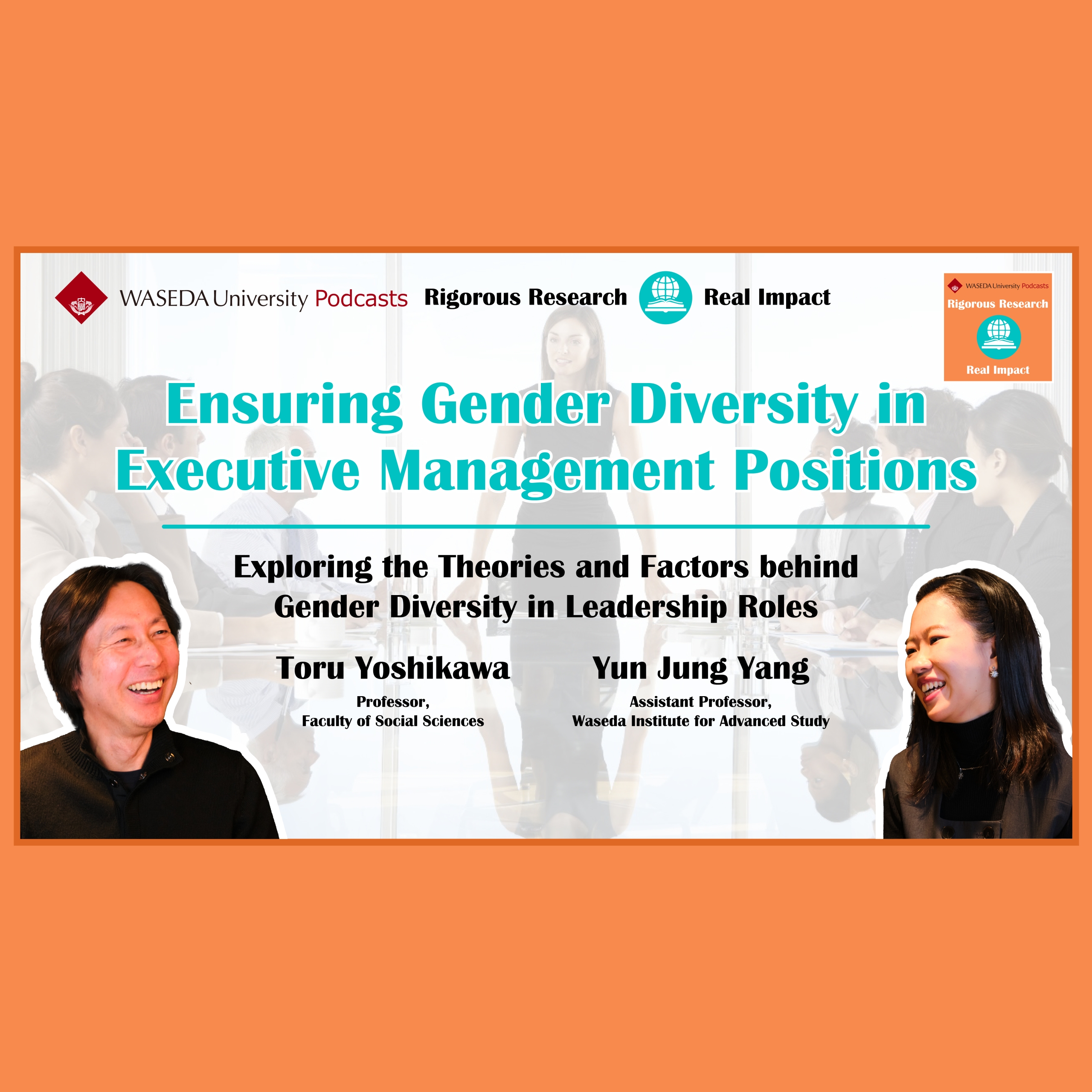[Podcast Column] Sustainable Change Over Symbolic Gestures: Gender Diversity in Top Management
Thu, Aug 21, 2025-
Tags
The first 8-episode series of Waseda University’s English podcast “Rigorous Research, Real Impact” is currently streaming for free on Spotify, Amazon Music, Apple Podcasts, and YouTube.
Professor Toru Yoshikawa (Faculty of Social Sciences) served as the guest expert for episode 7 “Ensuring Gender Diversity in Executive Management Positions”. In the excerpt below he reflects on his research of women in the Chief Human Resources Officer (CHRO) roll and what can be done to encourage gender diversity in top management teams.
 You can read the full transcript by clicking the above episode banner.
You can read the full transcript by clicking the above episode banner.
Question: How can we get more women into top management positions?
Professor Yoshikawa (10:08): Okay, so to have more women in the top executive positions, there are two ways. One is the creation of new positions, right? To appoint women to the position or gender shift, replace men with women.
Okay. So in our research we look at the latter. Replacement of men with women. Okay. So, to have that to happen, we noticed that it’s not always automatic. We need some external forces for the shift to take place.
So, we notice that if you have CEOs who are linked with other corporations that have female CHR officers, then he brings back the practice to the home institution, then gender shift happens. That’s one way.
Number two, if your company is an industry where many other companies already have female chief HR officers, then they feel pressure to appoint females. Then shift happens. The two mechanisms, the external forces, you know, that motivate companies to make a shift.
Question: What are the key organizational practices that can ensure these appointments go beyond symbolic gestures to create real sustainable change?
Professor Yoshikawa (14:33) : Okay, well there’s again many studies done by human resource researchers on that topic. And, I guess one of the key findings is that a mentorship program to nurture female, potential female leaders, helps facilitate the women to get promoted in the future. That’s one thing.
The other main thing may be training, not only female but male employees to change the mindset to accept female leaders. I think that the potential impact of the greater diversity in corporate leadership is that it may attract a more female or other minority job applicants. Because this shows that the company is more open to embracing females and minority employees.
So, the companies become attractive to good talent from the labor market. At the same time, companies have to be also very careful about appointing women to that role. Because, let’s say company only appoint female, so for example female gendered positions, it may send a signal to the labor market that the company has a bias against women. So it’s a double edged sword.
And to achieve the substantive rather than the symbolic leadership diversity, I think the culture change is critical and very essential. Simply appointing a couple of female outside board members on corporate board or appointing a female Chief HR Officer is not usually sufficient to make you know a substantial change in the diversity because such appointments alone may only lead to the rather symbolic gesture to the external stakeholders.
So therefore, in Japan, for example, the top management team’s boards are still male-dominated. So the commitment made by, for example, CEOs/the President is quite essential to make change in corporate culture.
About the Guest:
Dr. Toru Yoshikawa began working at Waseda University’s Faculty of Social Sciences in 2023. He specializes in business administration, strategic management, corporate governance, top management teams, innovation, and international business. He obtained his PhD from York University and has previously taught at Nihon University, McMaster University, and Singapore Management University. Prior to that he spent a number of years working in the finance industry. Dr. Yoshikawa is a member of the Academy of Management, the Academy of International Business, the Strategic Management Society, and the International Corporate Governance Society.


![[Podcast Column] Sustainable Change Over Symbolic Gestures: Gender Diversity in Top Management](https://www.waseda.jp/top/en/assets/uploads/2025/08/Eng-Podcast-Column-Ep-7.png)












